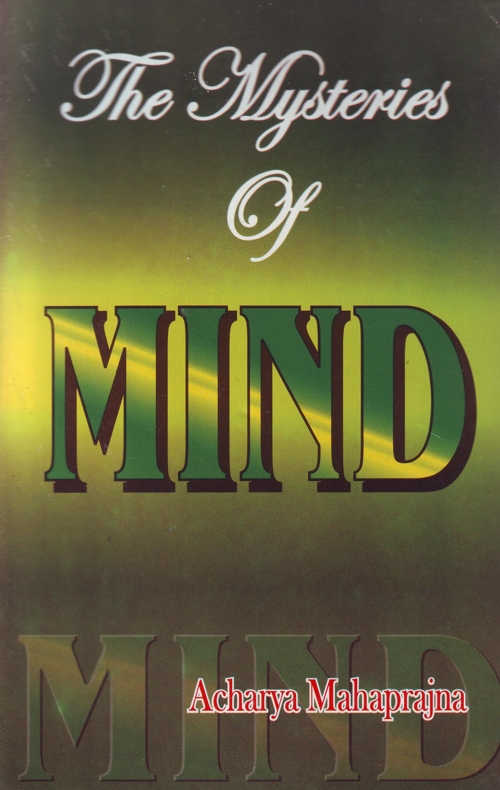
The human nervous system is the seat of knowledge and consciousness. Consciousness pervades the entire body. The portion of the body, which extends from the lower end of the spinal cord to the brain, is the chief centre of consciousness. It is in this area that consciousness manifests itself.
This is also the seat of citta, mind, sense organs, feelings, counter feelings, knowledge etc. They find their expression in this area only.
It is also the storehouse of energy. It is also the centre of the fibres of sensory and motor nerves.
Man knows how to push his energy downwards only. He does not know how to push it upwards. The same energy, which is flowing downwards, can be directed upwards. The downward flow of energy from the brain implies man's entry into the material world. The upward flow of the energy of the sex-centres implies man's entry into the world of the spirit. The former gives us a taste of material pleasures whereas the latter gives us a taste of spiritual joy. These feelings are conditioned by the direction towards which energy is flowing. The upward flow has been termed as internal sex-enjoyment or love of the self or intercourse with the soul. It may, however, be asked whether it is possible to have intercourse with the soul which is not a material entity and is invisible. The answer is - that there is a centre in the body where intercourse with the soul is possible.
The human body is composed of seven substances. The seventh is sukra or virya (semen). It has been said that the release of a single drop (bindu) of virya invites death. The retention of a single drop invites life.
What is bindu? Vital energy of the brain is called bindu. This bindu is situated in the sahasrara cakra. When energy enters this area, it brings about intercourse with the soul. The statement that the dropping of a single bindu causes death and its retention preserves life thus seems to be a correct statement. The vital force when it flows downwards causes death and when it begins to flow upwards brings life, eternal life. This is the ascending path, the path of the progress of the soul. This ascent remains arrested while the vital energy becomes confined to the lower parts of the body. The idea of the gradation of the gunasthanas or stages of spiritual progress of the soul implies the upward movement of the vital force. When energy flows downwards, man remains confined into the first, second and third gunasthanas. Then begins the uprising of energy. It passes from the susumna channel to the centre of the brain and arrives at the stage of pure knowledge and self-realization. The path leading to pure knowledge as well as journey to it is short. The entire journey is an ascending journey only.
This ascending journey needs the support of faith (sraddha). What is sraddha? When consciousness flows into the sahasrara cakra and becomes absorbed in it, the resultant state is called sraddha. Sraddha is a great craving, a great thirst. It is such a tremendous thirst that it cannot be quenched even by drinking the entire waters of the oceans. It is born at the level of the unconscious mind.
The upasaka or spiritual aspirant is one whose very bones and marrow are soaked in religion. The term asthi has two meanings, the bones and the spinal cord. How can love of religion be sustained in the bones and marrow? Are the bones and marrow in any way connected with sraddha and bhavana? Majja also means the thicker parts of the brain and the spinal cord. The essence of religion lies in sraddha entering into the spinal cord and the brain. It liter all centres into the spinal cord and the brain and gets embedded there. Then only is it capable of bearing fruit. It bears fruit only when it has entered into the unconscious mind. A wavering sraddha, which often changes its course, is not sraddha in the real sense of the term.
A certain man once fell in love with a woman. He administered to her a magical herb as a result of which she became enamoured of him. She lost interest in everybody else and became mad after him. Her family became very much upset. They called a magician who said that the woman's passion for her lover had become so much deep-rooted that unless it was removed she will continue to be infatuated with him. The magician then applied a charm and eradicated her infatuation. It is not easy to extract the desires, which have become embedded in the unconscious. The Susumna channel and the sahasrara cakra are two powerful centres in the body. Experienced practitioners have attached great importance to them. When the faith that spiritual joy is the greatest joy takes root in the unconscious mind, the practitioner begins to feel the vibrations in the psyche, which are vibrations of positive energy.
Somebody asked Bhagavan Mahavira: "What do we achieve from religious faith?" The latter replied: "Religious faith brings to an end all kinds of curiosity." When spiritual vibrations begin, all curiosity about the material vibrations comes to an end. One of the methods of stopping curiosity about the sex-centres is to push up the energy collected in the sex-centres. The practitioner has to resolve and to pull the nerves of the area of the apana upwards. If this is done for fifteen or twenty minutes or for half an hour, the vibrations, which produce spiritual joy, will begin.
The electricity in the tongue is negative, whereas that in the head is positive. If you touched your palate with your tongue, you will feel a strange pleasure. This will produce in you the state of self-absorption.
The fusion of positive and negative charges of energy and bhavana produce spiritual vibrations. Material vibrations go on disappearing gradually as the spiritual vibrations become intense. It appears to the practitioner as if he is entering into the most valuable experience.
The subject, which we have discussed above, is not a matter of argument. It refers to experience. Mere reasoning, however fine it may be, cannot take the practitioner to the depths of experience. He will have to practise and exert himself to attain experience. There are bound to be difficulties in his exercises. At times his progress may suddenly come to a dead stop. However, there is only one path, which leads to the desired end.
All kinds of material pleasures taken together cannot compete with the joys of the spiritual world. Talks about the joys of the spiritual world may appear to be attractive and they may also create doubts and misgivings in the minds of the listeners who may begin to weigh one alternative against another. Language is a very defective instrument even if it is used by men of perfect knowledge or even by the tirthahkaras, not to speak of ordinary practitioners and it may produce doubts. The testing ground of both - faith and scepticism is experience. There is no other ground. The only aim of sadhana is to enable the practitioner to feel the vibrations we have discussed above and to convince him that spiritual joy is not dependent upon agencies external to the soul.
One who has known the internal vibrations also knows external vibrations and vice versa. He cannot become interested in internal vibrations until he has known the external vibrations. He comes to realize that the former are more joy-giving, faultless and profitable. Acharya Mahaprajna
Acharya Mahaprajna

